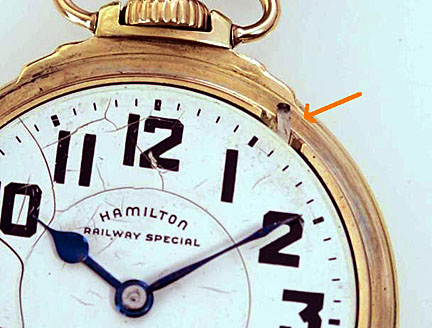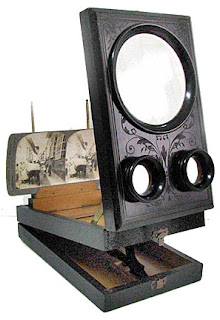 QUESTION: As I browse the booths of antique shows in my area, I’ve come upon small ochre-colored wooden boxes in various shapes with a black printed image of a historical landmark, most of which seem to be from America. The prices of these little boxes are through the roof. What are these items, and why are they so pricey?
QUESTION: As I browse the booths of antique shows in my area, I’ve come upon small ochre-colored wooden boxes in various shapes with a black printed image of a historical landmark, most of which seem to be from America. The prices of these little boxes are through the roof. What are these items, and why are they so pricey?
ANSWER: What you’ve been seeing is known as Mauchline (pronounced Moch’lin) Ware, a form of souvenir ware made by the Smith family of Mauchline, Ayrshire, now Strathclyde, Scotland, and favored by affluent Victorians traveling abroad.
 Adorned with transfer ware scenes of landmarks, this Scottish wooden ware dates from about 1880 to 1900. Though the Smiths sold it throughout the United Kingdom, they also exported to North America, Europe, South Africa, Australia, and elsewhere.
Adorned with transfer ware scenes of landmarks, this Scottish wooden ware dates from about 1880 to 1900. Though the Smiths sold it throughout the United Kingdom, they also exported to North America, Europe, South Africa, Australia, and elsewhere.
Mauchline, located 11 miles inland from the Scottish coastal resort of Ayr, was the center of the Mauchline Ware industry, which at its peak in the 1860s, employed over 400 people in the manufacture of small, but beautifully made and invariably useful wooden souvenirs and gift ware. Because of the contribution its originators, W. & A. Smith of Mauchline, the majority of souvenirs produced in southwest Scotland from the early 19th-century to the 1930s has come to be commonly known as "Mauchline Ware."
Mauchline Ware developed partly by accident and partly through necessity. Towards the end of the 18th century in the town of Alyth, Perthshire (now Tayside), a man named John Sandy invented the "hidden hinge" snuff box. His invention eventually spread to at least 50 other Scottish snuff box manufacturers in the early 1820s, most of them in Ayrshire, including William and Andrew Smith of Mauchline.
With so many manufacturers, snuff box production continued at an all-time high, but the habit of taking snuff was on its way out. Although they made mostly snuff boxes, manufacturers like W.& A. Smith also produced other items, from postage stamp boxes to tea trays, all out of wood. The first of the new products were tea caddies utilizing the hidden hinge. In fact, they were so highly prized that when a female employee got married, the Smith’s Box Works gave her one of their tea caddies as a present.
 Over the next century, the Smiths of Mauchline and their competitors produced tens of thousands of articles in hundreds of styles and in several different finishes. They generally used sycamore wood, which has a very close grain and a pleasing color. The precise date of the first transfer wares isn’t known, but companies manufactured them from the early 1850s until 1933.
Over the next century, the Smiths of Mauchline and their competitors produced tens of thousands of articles in hundreds of styles and in several different finishes. They generally used sycamore wood, which has a very close grain and a pleasing color. The precise date of the first transfer wares isn’t known, but companies manufactured them from the early 1850s until 1933.
Woodworkers created more items with transfer decoration than any other finish. These were true souvenir wares, since they decorated each piece with a view associated with the place of purchase.
Skilled craftsman applied transfers to the finished articles prior to coating them with several layers of slow drying copal varnish. This process took from 6 to 12 weeks to complete, although it seems that they must of developed an accelerated means of varnishing to cope with the sheer scale of production. However, this lengthy and careful process of manufacture accounted for the extreme durability of these products, many of which have survived in near mint condition.
 As with earlier hand-decorated snuff boxes, manufacturers used sycamore wood, known as "plane" in Scotland, its pale color making an excellent background for the black transfers. While the majority of Mauchline Ware items were small, thus warranting only a single transfer, it was by no means unusual for craftsmen to apply six or more transfers to some of the larger pieces. Where they applied more than one transfer, the Smiths related views to one another, either by subject or geography.
As with earlier hand-decorated snuff boxes, manufacturers used sycamore wood, known as "plane" in Scotland, its pale color making an excellent background for the black transfers. While the majority of Mauchline Ware items were small, thus warranting only a single transfer, it was by no means unusual for craftsmen to apply six or more transfers to some of the larger pieces. Where they applied more than one transfer, the Smiths related views to one another, either by subject or geography.
 Views of Scotland dominated the transfer ware. "Burnsian" views, by far, formed the largest single grouping and views associated with Sir Walter Scott probably the second. In addition to virtually every town and village, producers immortalized a great number of beauty spots, country houses, churches, schools, ruins and even cottage hospitals in transfer ware. Other views included seaside resorts and the inland spa towns of Malvern, Cheltenham, Chester, Bath and Harrogate, which became increasingly accessible to a growing number of people as a result of the rapidly expanding rail network. The Isle of Wight was particularly popular, probably due to Victoria's love of the place. And the popular south and east coast resorts--Brighton, Eastbourne, Hastings, Margate and Scarborough--saw their share.
Views of Scotland dominated the transfer ware. "Burnsian" views, by far, formed the largest single grouping and views associated with Sir Walter Scott probably the second. In addition to virtually every town and village, producers immortalized a great number of beauty spots, country houses, churches, schools, ruins and even cottage hospitals in transfer ware. Other views included seaside resorts and the inland spa towns of Malvern, Cheltenham, Chester, Bath and Harrogate, which became increasingly accessible to a growing number of people as a result of the rapidly expanding rail network. The Isle of Wight was particularly popular, probably due to Victoria's love of the place. And the popular south and east coast resorts--Brighton, Eastbourne, Hastings, Margate and Scarborough--saw their share.
 From the 1830s on, makers produced a steadily decreasing number of snuff boxes while producing an increasing array of needlework, stationery, domestic and cosmetic items as well as articles for personal decoration and amusement. In addition, companies created an incredible range of boxes in every conceivable size and shape and for limitless purposes.
From the 1830s on, makers produced a steadily decreasing number of snuff boxes while producing an increasing array of needlework, stationery, domestic and cosmetic items as well as articles for personal decoration and amusement. In addition, companies created an incredible range of boxes in every conceivable size and shape and for limitless purposes.
A great many cotton, thread and ribbon manufacturers—J & P Coates, Chadwicks, Clarks Glenfield, Kerr and Medlock—purchased Mauchline Ware containers for their products, their names clearly yet discreetly displayed either inside the lid or on the base. Thus, manufacturers transformed rather mundane accessories into attractive gifts.
 Producers also turned out novelty inkwells, pens, pencils, pencil boxes and letter openers, as well as many designs of bookmarks including a patented combined bookmark and paper cutter.
Producers also turned out novelty inkwells, pens, pencils, pencil boxes and letter openers, as well as many designs of bookmarks including a patented combined bookmark and paper cutter.
And it’s because of Mauchline Ware’s uniqueness that prices for it have risen to such high levels.
To read more articles on antiques, please visit the Antiques Articles section of my Web site. And to stay up to the minute on antiques and collectibles, please join the over 30,000 readers by following my free online magazine, #TheAntiquesAlmanac. Learn more about "Coffee--The Brew of Life" in the 2023 Summer Edition, online now. And to read daily posts about unique objects from the past and their histories, like the #Antiques and More Collection on Facebook.











































